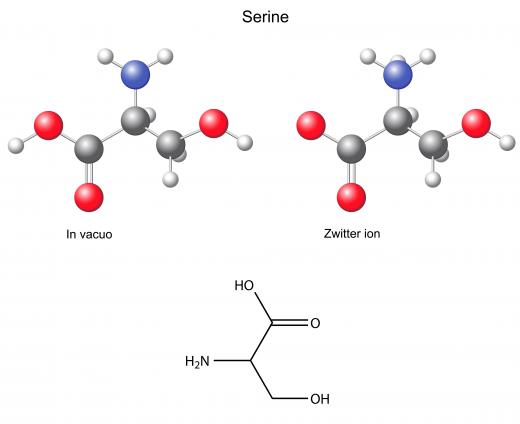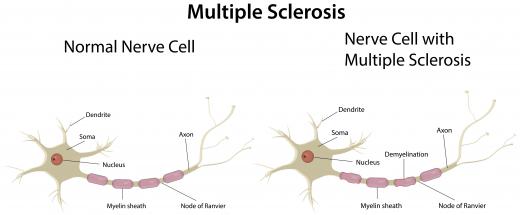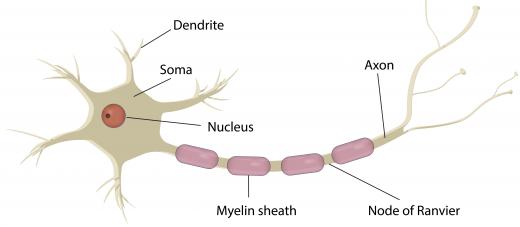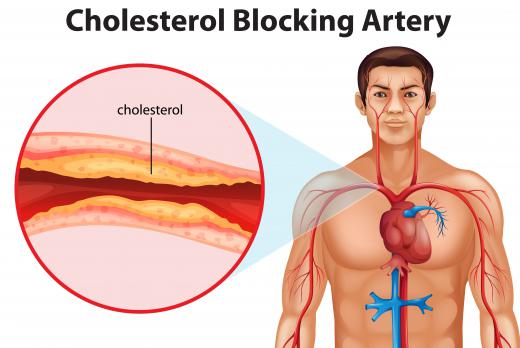What is a Sphingomyelin?
In biology, a sphingomyelin (SPH) is a particular type of lipid that makes up the majority of the fat content of cell membranes. SPH structure consists of a polar group, a sphingosine, and a fatty acid. The polar group is made up of a molecule of either phosphoethanolamine or phosphocholine. This is connected to the sphingosine, which is an amino alcohol molecule with 18 carbon atoms. The fatty acid part of the structure is usually saturated, and is connected directly to the sphingosine.
Most lipids that form part of the structure of cell membranes, particularly in human cells, are derived from glycogen. SPH, however, differs from most cell membrane lipids, because it is usually built from the amino acid serine and the fatty acid palmitate. Sphingomyelin synthase, or sphingomyelinase, is the main enzyme that is responsible for this chemical reaction.

The functions of SPH are not fully understood. These molecules certainly form a vital building block in the structure of cell membranes. SPH and cholesterol are often discovered in high concentrations together in certain regions of the cell membrane, leading to the hypothesis that the metabolism of these two substances may be interrelated. It is possible that SPH plays a role in controlling how cholesterol is distributed within human cells.

Another important function appears to be signal transmission in nerve cells. This is in keeping with the observation that the myelin sheath, a membrane found around the long part of many neurons, has a chemical makeup with a very high sphingomyelin ratio. In addition to the high concentrations found in nerve tissue, sphingomyelin is also a particularly important component of red blood cells, and certain cells in the mammalian eye.

Disorders related to sphingomyelin production include acanthocytosis and the rarely occurring Niemann-Pick Disease. Acanthocytosis is a syndrome where red blood cells lose their smooth regular shape, and become spiked, or shaped like a star with a large number of points. These dysfunctional blood cells may be seen where there is an excess of sphingomyelin production in the blood.

Niemann-Pick Disease is a hereditary disorder where a deficiency in the enzyme sphingomyelinase. This causes sphingomyelin to accumulate in the brain and several other vital organs. When this occurs in infants, it usually causes severe damage to the brain, and in most cases is fatal.
AS FEATURED ON:
AS FEATURED ON:














Discuss this Article
Post your comments